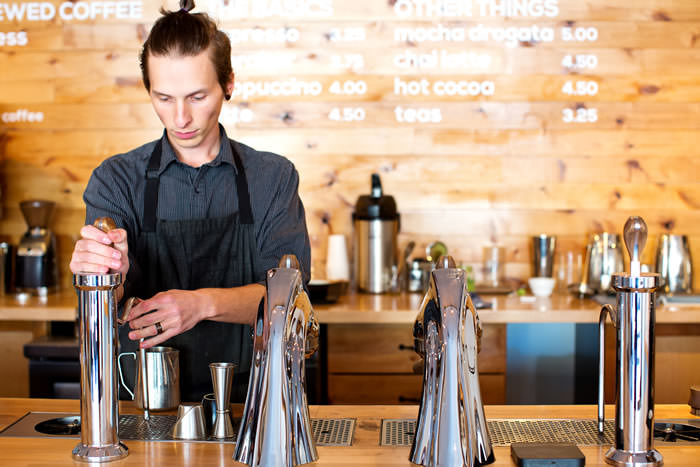liquid culture
MATCHA MANIA
The ancient, nutritional alternative to coffee is growing in popularity.
WRITTEN BY AIMÉE EIGUREN-NECOCHEA
PHOTOS BY GINA MUNDA

A steaming cup of matcha tea is packed with nutritional benefits, gives you 10 times the caffeine of regular green tea, and yet leaves you with a smooth buzz of energy that far outlasts a cup of joe. Sound too good to be true? It’s not. Just ask Jordan Caroompas, barista at Old World Coffee Lab in Reno, who’s a bit of a matcha aficionado.
“Matcha recently has come into focus for the mainstream hot beverage consumer as a sort of ‘super food,’” Caroompas says. “It’s something that is tasty, quirky, and also offers (allegedly) remarkable health benefits. Our customers are highly intrigued by matcha and ask for it and about it often. They like the color, and that it’s Japanese, and, mostly, they enjoy watching us prepare it before their eyes.”
Royal tea
Matcha has a rather royal past. During the Tang Dynasty of China (618 – 907 AD), tea leaves were steamed and formed into tea bricks for storage and trade. The tea was prepared by roasting and pulverizing it, then dissolving the resulting tea powder into hot water.
During the Song Dynasty (960 – 1279), the method of making powdered tea from steam-prepared dried tea leaves, and then preparing the beverage by whipping the tea powder and hot water together in a bowl, became popular. The preparation and consumption of powdered tea was formed into a ritual by Zen Buddhists, who later took these methods to Japan in 1191.
While other green teas are grown throughout the world, matcha is unique to Japan. It is the heart of the Japanese way of tea and has been celebrated in the traditional Japanese tea ceremony for hundreds of years.
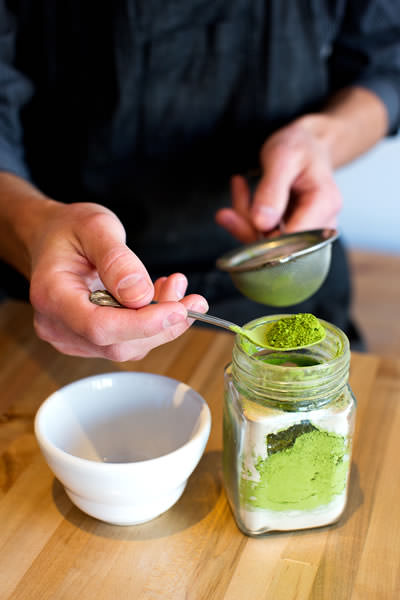
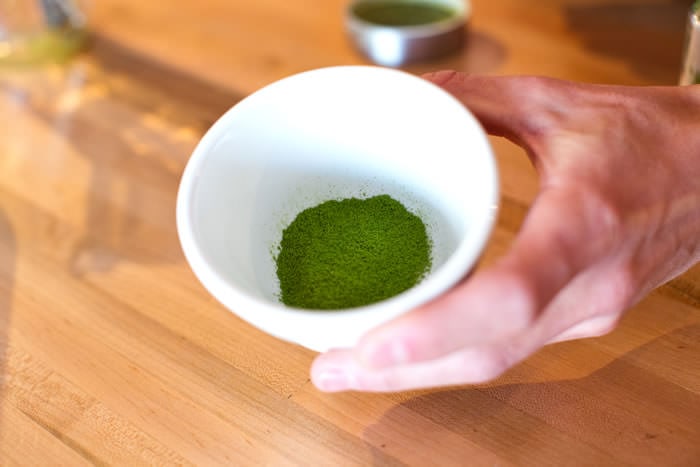
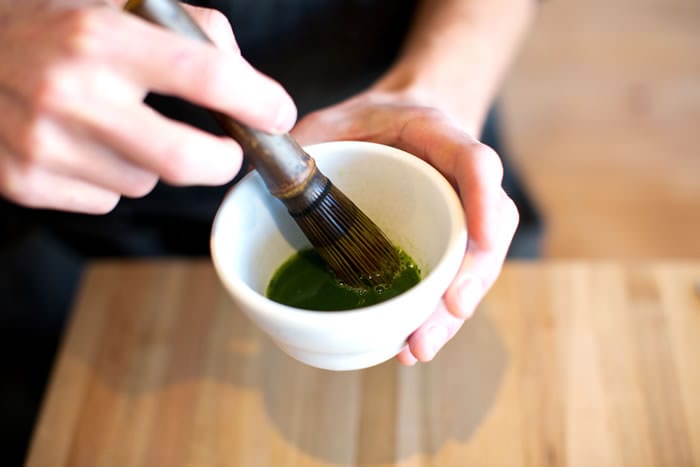
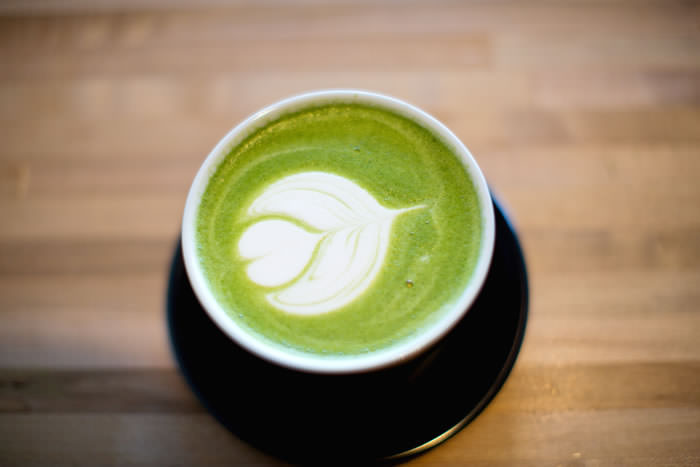
Matcha making
Several weeks prior to the annual harvest in the spring, farmers cover the tea plants with bamboo mats or tarps, gradually reducing the amount of sunlight that reaches the plants. This step increases the chlorophyll content, turning the leaves dark green and giving matcha its distinct green color.
When you drink matcha, you’re ingesting the entire leaf and receiving 100 percent of its nutrients. Matcha powdered green tea has 137 times more antioxidants than regularly brewed green tea, making it, essentially, an antioxidant powerhouse.
What’s behind the newfound interest in matcha by customers and coffee enthusiasts?
“One reason matcha has made such a strong entry into the American specialty coffee market in the last few years is that, like coffee, matcha is a drink that requires a specific technical preparation along with a detailed, multistep process,” Caroompas says. “Bringing intention to a process is what specialty coffee is about in many ways — so is preparing matcha. We keep the idea of ceremony alive in our matcha-making at Old World Coffee.”
Aimee Eiguren-Necochea is a gluten-free food writer and founder of A.R.E. Public Relations (gluten-free PR and marketing at Arepublicrelations.com). She’s also a celiac disease advocate and advisory board member of The University of Chicago Celiac Disease Center. A former Reno resident, Eiguren-Necochea now resides in the Bay Area.
Recipe
Matcha Tea Latte
(courtesy of Josiah Hejny, co-owner, Old World Coffee Lab in Reno. Serves 1)
½ teaspoon pure sifted matcha green tea (organic is preferred)
Hot water
2 ounces whole milk
1¼ teaspoons local honey (or to taste)
Add just enough hot water to matcha powder to make paste. Whisk briskly for a minute or two until smooth and matcha forms bright green foam.
Add 2 ounces steamed whole milk (also may be served with almond or coconut milk). Add honey, adjusting to taste.
(Old World Coffee Lab gives customers the option to sweeten their matcha lattes with roughly 8 grams, or about 1¼ teaspoons, honey, depending upon customer preference.)
Resources
Where to buy a cup of local matcha
Old World Coffee Lab
104 California Ave., Reno • 775-391-0189 • www.Oldworldcoffee.co
Coffeebar
682 Mt. Rose St., Reno • 775-800-1090
10120 Jibboom St., Ste. 101, Truckee • 530-587-2000
12047 Donner Pass Road, Truckee • 530-587-7707
www.Coffeebar.com
Hub Tea Bar & Eatery
727 Riverside Drive, Reno • 775-453-1911 • www.Hubcoffeeroasters.com/tea-bar-eatery
Too Soul Tea Co.
542½ Plumas St., Reno • 775-322-2001
1325 Airmotive Way, Ste. 128½, Reno • 775-440-1333
www.Toosoultea.com
Where to buy (retail)
Whole Foods Market • 6139 S. Virginia St., Reno • 775-852-8023 • www.Wholefoodsmarket.com/stores/reno
Cost Plus World Market Reno • 4987 S. Virginia St., Reno • 775-826-5300 • www.Stores.worldmarket.com/nv/reno/4987-s-virginia-street.html
Where to purchase matcha tea tools
Matcha Source • www.Matchasource.com/accessories
The Republic of Tea • www.Republicoftea.com
WRITTEN BY BARBARA TWITCHELL
PHOTOS BY JAMIE KINGHAM, JEN BRITTON, AND COURTESY OF CHAD AND ELYSA KLEIDOSTY
